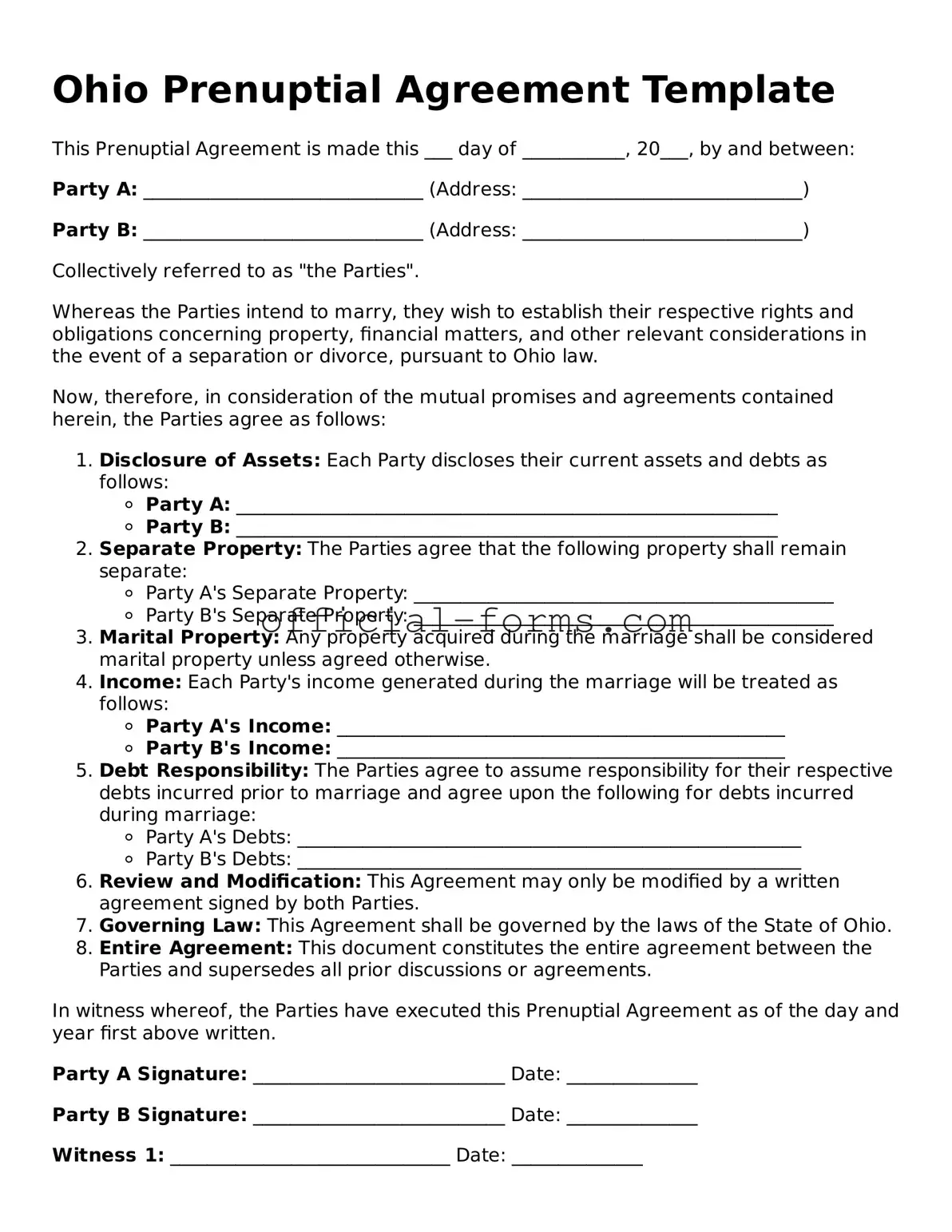When filling out the Ohio Prenuptial Agreement form, individuals often make several common mistakes that can lead to complications later on. One frequent error is failing to provide complete and accurate financial information. It's essential for both parties to fully disclose their assets, debts, and income. Incomplete financial disclosure can result in disputes or the agreement being challenged in the future.
Another mistake is neglecting to include specific terms regarding property division. People sometimes assume that their intentions are clear, but vague language can lead to misunderstandings. Clear and precise terms help ensure that both parties understand their rights and obligations should the marriage end.
Many individuals also overlook the importance of having the agreement reviewed by a legal professional. While it may seem unnecessary, a lawyer can provide valuable insights and help identify potential issues. Without this review, individuals may unknowingly sign an agreement that does not fully protect their interests.
Additionally, some people fail to consider the timing of the agreement. It’s crucial to complete the prenuptial agreement well before the wedding date. Waiting until the last minute can create pressure and lead to rushed decisions, which may not reflect the true intentions of both parties.
Another common mistake is not discussing the prenuptial agreement openly with each other. Some individuals may feel uncomfortable bringing up the topic, leading to misunderstandings or resentment. Open communication fosters trust and ensures that both parties are on the same page.
Furthermore, individuals sometimes forget to update the agreement after significant life changes. Events such as the birth of a child, changes in income, or the acquisition of new assets can affect the terms of the agreement. Regularly reviewing and updating the prenup can help keep it relevant.
People also occasionally make the mistake of assuming that a prenuptial agreement is only for the wealthy. This misconception can prevent individuals from protecting their interests, regardless of their financial situation. A prenup can address various issues, including debt, property division, and spousal support.
Lastly, some individuals may not fully understand the legal implications of the agreement. It’s important to recognize that a prenuptial agreement is a legally binding document. Without a clear understanding of its terms and consequences, individuals may inadvertently agree to unfavorable conditions.
